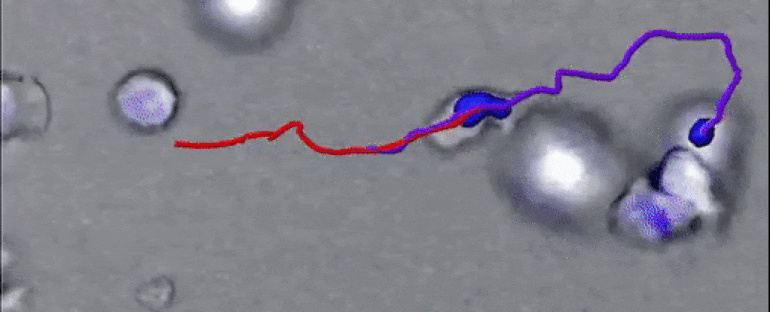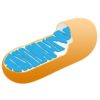When a pathogen attacks your cells, your body calls in the cavalry. But how exactly do immune components, such as white blood cells, make it through bodily tissues to get to the invasion?
In new experiments, researchers have demonstrated how a type of white blood cell, a cytotoxic T lymphocyte (CTL), is able to dig tunnels through tissue like a snowplow clearing the way for emergency vehicles. And they captured it on camera.
Here you can see red-stained CTLs nudging and pawing a tunnel through green-stained collagen fibres, under lightsheet microscopy.
Immune cells tunnelling through surrounding tissue. (Sadjadi et al Biophysical)
CTLs, also known as killer T cells, destroy infected, cancerous, or other damaged cells. They search for specific molecules that indicate problematic cells (antigens). These targets are often low in number during the start of a disease or infection, so the ability of CTL to rapidly find them is important for an effective immune response.
“Understanding the migration and interactions of immune cells in collagen networks is crucial to unravel the underlying details of the immune response and to design effective treatment strategies,” said theoretical physicist Heiko Rieger of Saarland University in Germany.
Often killer T cell targets are within a dense extracellular matrix, the stuff between the cells in our bodies that provides our cells with an anchor, structural support, and biochemical signals.
There are different types of extracellular matrices, including blood plasma and connective tissues. The tissue variety is a complex obstacle course of collagen fibre scaffolding, elastin for stretch and sticky proteins to help bind everything all together, within which extracellular vesicles and cells sit and capillaries flow through.
Saarland University biophysicist Zeinab Sadjadi and colleagues used collagen from cows to create a model of an extracellular matrix. They then observed how human CTLs travelled through different densities of this matrix.
The found killer T cells had a slow wiggle and a fast-moving state, as well as a travel mode that switches between the two. As they move through the tissue, the human cells nudge and stretch the collagen fibres out of the way, creating a tunnel that other immune components make use of – the team suspects it’s the slow movement they use to search for their target and create the tunnels.
Experiments showed the T cells following each other through these tunnels – as you can see in the footage at the top of the page – suggesting they use the faster travel once the pathways have already been created.
Of course, this discovery has only been demonstrated in the scientists’ simplified model and not yet within the far more complicated world of actual human connective tissue, but similar modes of migration have been observed in another immune cell type.
“The similarity of the characteristics of CTLs and natural killer cell trajectories points towards a common mechanism for migration of both cell types through collagen networks,” said Rieger.
Killer T cells have previously been found unnecessarily attacking inflamed connective tissues in rats, supporting the idea they can manipulate the extracellular matrix and even implicating them in arthritis.
“Our findings suggest that modulating properties of the ECM of tissue would have an impact on the efficiency of the immune response – and might give rise to ideas for new therapeutic strategies in cancer treatment,” said Rieger.
Understanding how these cells get around would reveal barriers that we could help dismantle or fortify to aid our immune systems.
This research was published in the Biophysical Journal.



